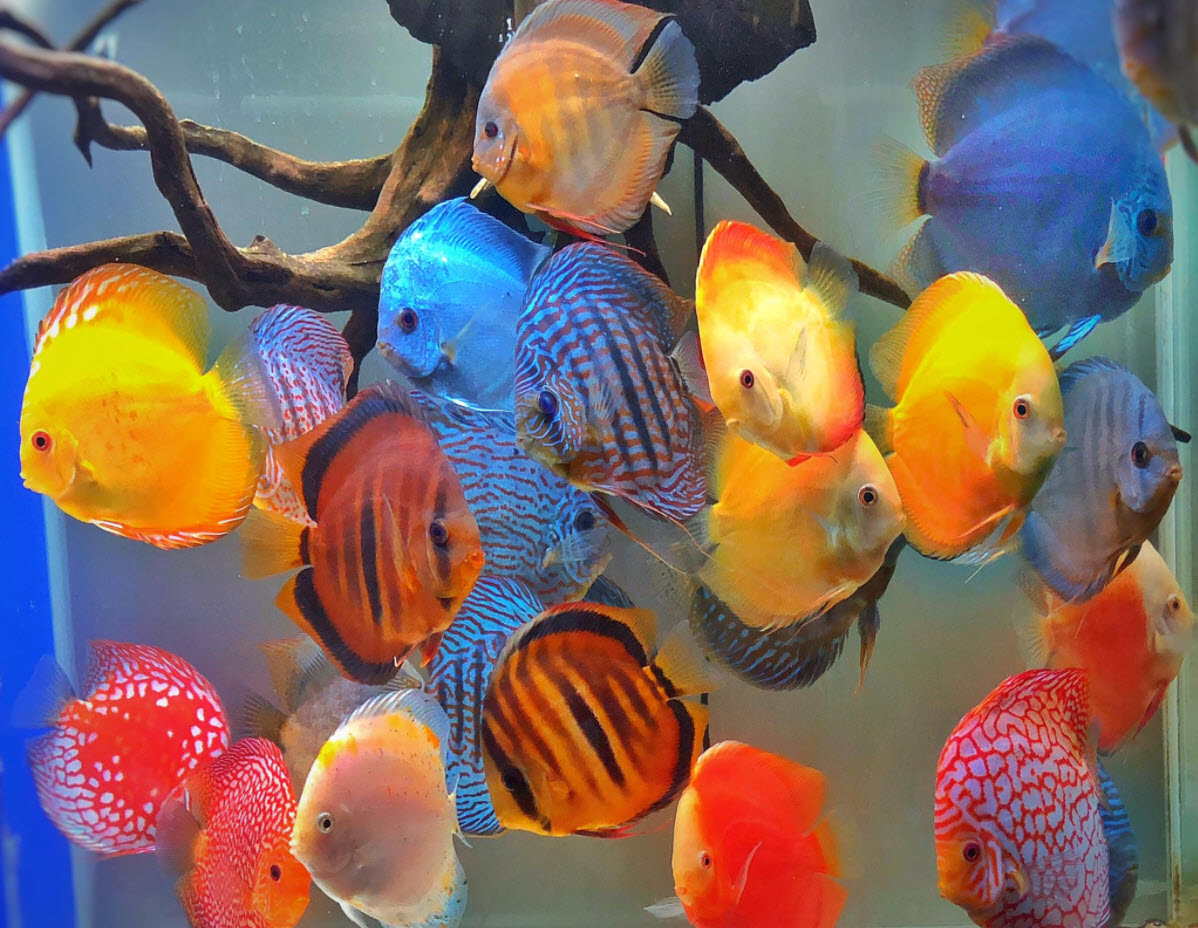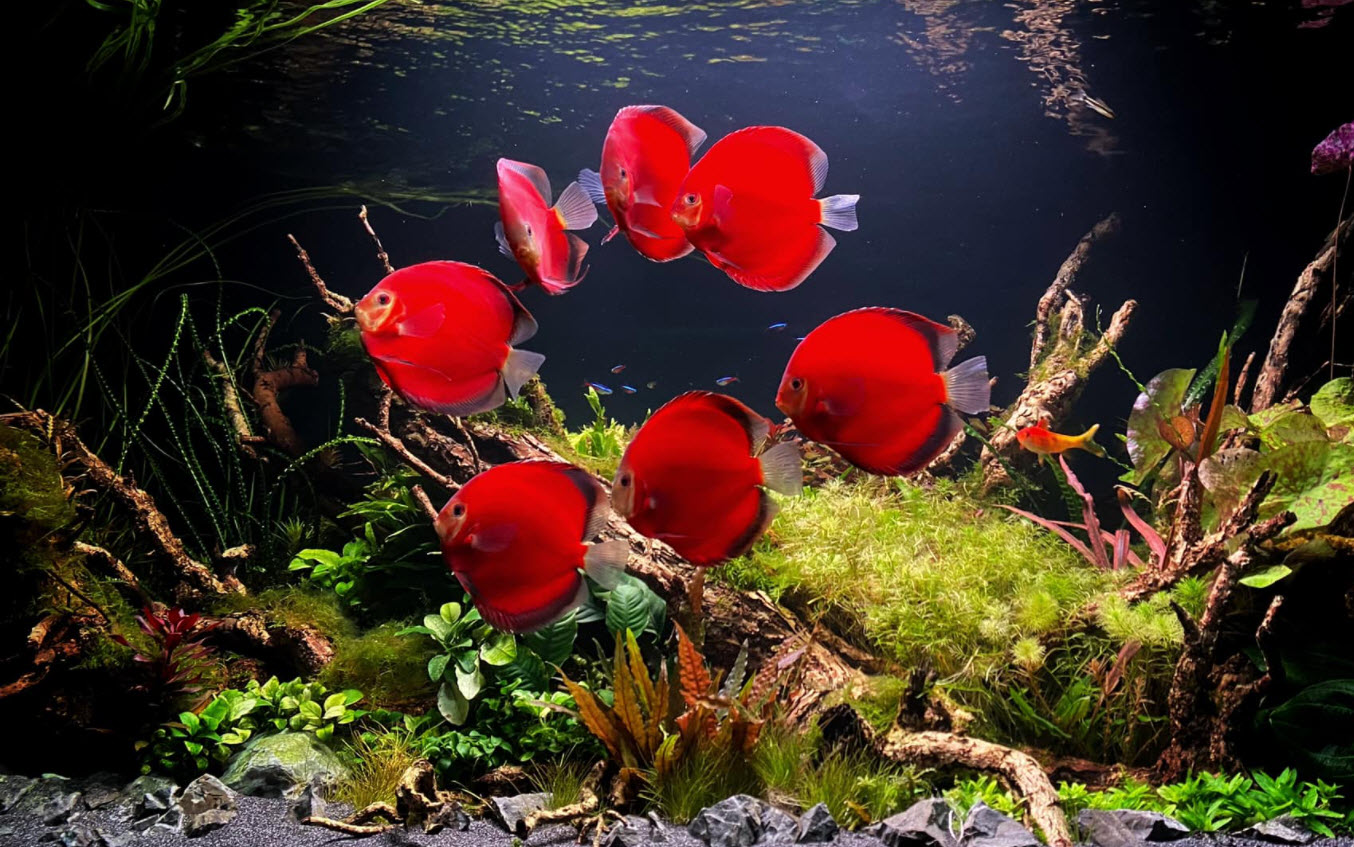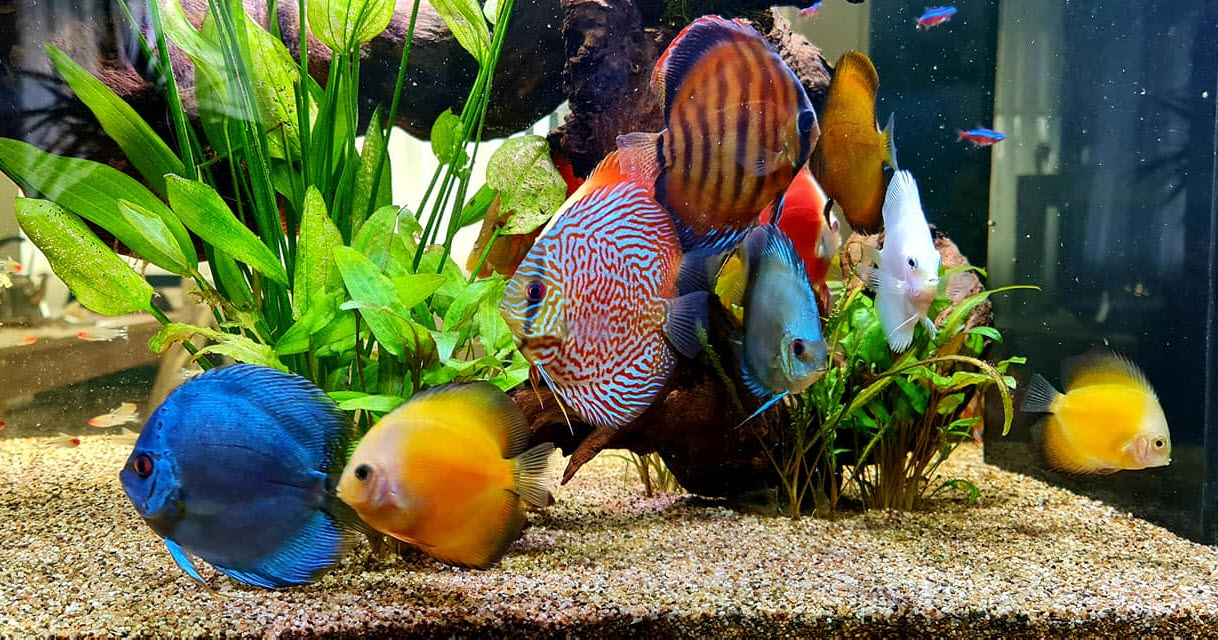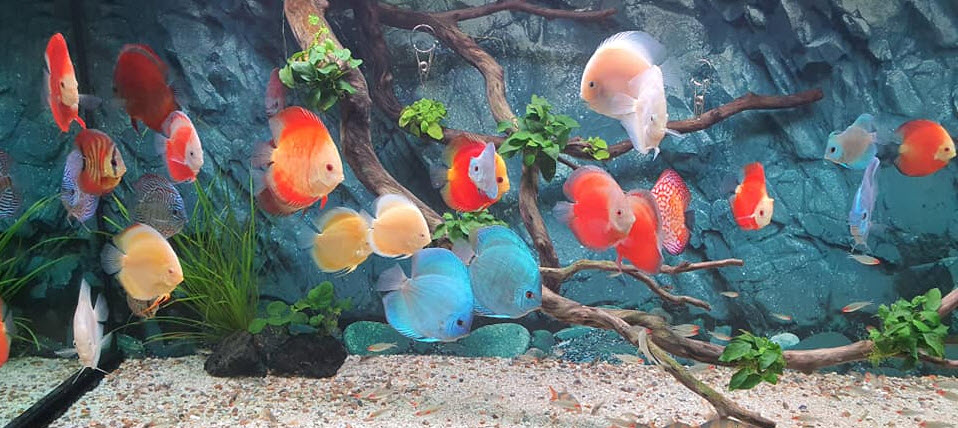Many think that discus MUST be kept at a high temperature 84 to 90°F (29 to 32°C) in water which has a low TDS and a pH between 6.0 and 7.0. This is ONLY true if one is trying to raise competitive discus which are as large as possible. Adult discus in a decorative aquarium will do just fine at anywhere from 75 to 85°F (24 to 29°C), 40 to 400 TDS, 6.0 to 8.4 pH IF the water is crystal clear and bacteria free. They just won’t grow as large as they could.
The native waters of discus are lakes and slow rivers in the Amazon. The temperatures of such waters are between 75 and 80°F (24 to 27°C). Only when the rainy season floods spread the water over the land does the shallow water over land heat up to 80 to 90°F (27 to 32°C).
When the discus go into the flood waters their metabolisms will speed up, they will eat a lot more (food is more plentiful) and they have a growth spurt as a result. By feeding more in warm water one can duplicate the effect in an aquarium. But one does NOT HAVE to do this to have healthy, attractive discus. In cooler water the discus will just be slightly smaller. Anecdotal evidence says cooler temperatures will mean brighter colors and longer life spans.

Flow with Discus
The need for over filtration and the need for placid still water in an aquarium with discus is tricky as the two tend to be at odds with each other. Lots of filtration normally means lots of water flow. Here is how I do it (there are many ways to do this, this is just one way!):
I use a large two chamber fluidized K1 sump that has a flow through UV unit and a 2 turnover flow rate. I use a low power pump that only pumps about 30% of its rating because of the five feet of head to the top of the aquarium. The high flow inside the fluidized bed means I can use a low turn-over and flow through the aquarium.

I also use doubled up undergravel filters (two forty gallon (151 liter) under gravels in a 110 gallon (416 liter) tank). The undergravel filters have powerheads on them. There is a capped clear PVC pipe on the outlet of each powerhead. The capped pipe goes out about five inches (12.5 cm). It has a series of large holes drilled in the top of it. These holes direct the flow of the water upward from about three inches (7.5 cm) below the surface and two inches (5 cm) off the back wall of the aquarium. This gives lot of upward water flow and “choppy” water with little flow in the aquarium.
Note that I am a little “unusual” in that I hate the sound of bubbles and air pumps. If I didn’t mind the sound of air bubbles I would probably use airstone operated lifts on my undergravel filters. Aeration is very important in the discus tank.

The PVC outlet from the sump has a similar arrangement. It drops down into the tank and then out along the back of the aquarium about two inches (5 cm) off the back of the aquarium, four inches (10 cm) below the surface. There is a four inch (10 cm) section of capped clear pipe with three eights inch (9.5 mm) holes drilled all along the top of it. Again, this gives lot of upward water flow and “choppy” water with little flow in the aquarium. Note the upward facing holes MUST be large holes. If one uses small holes like one eighth (3,5 mm) or one tenth inch (2.5 mm) the spray can cause tank leaks or shorted out lights.
The tubes are all painted black. The tubes do become coated with algae inside and out after a period of time. But I just ignore it. It blends into the back wall of my aquarium as I never clean that. I just let algae accumulate against the black painted surface I use for my back walls of my aquariums.
Slowing Flow While Doing Aeration
There is one device which I used in some betta tanks a while back. It is very effective at doing both the aeration and water flow reduction. Take a one to two inch (2.5 to 5 cm) thin acrylic tube that one can get in pet stores and on line. Put an airstone down the tube. Then put the tube over the exit of a high flow filter so that the tube laps the outlet tube by about one to two inches (2.5 to 5 cm). The setup looks like this:

This device creates two opposing flows. The rising air bubbles create an upward flow. The incoming water from the filter creates a downward flow. And the bubbles get trapped and heavily turbulated in the mixing zone. This both reduces the flow and aerates very well. It is a good idea to play around with the overlap and the sizing to create the “best” situation for your particular tank.
The acrylic tube should be about one fourth to one half inch (6 to 12 mm) larger in diameter than the filter outlet tube. Make sure the acrylic tube is at least one inch below the surface of the aquarium. Note the angled cut at the bottom. Obviously you want the device to be open at the bottom to give the best flow. And sometimes the flow will be out the bottom. This is just fine. Also note the airstone needs a sizable air pump on it. The tiny cheap ones from Walmart won’t do the job.

Research on Water Parameters
One very pertinent study was done recently on the effect of pH on discus.
The experiment was conducted to examine the effect of varying water pH on haematological and hormonal parameters of popular freshwater aquarium fish discus (Symphysodon aequifasciatus). Discus brooders were reared in acidic (4.5, 5.5 and 6.5) and alkaline (7.5, 8.5 and 9.5) pH levels for a period of 90 days. Significant variation were noted for all haematological parameters such as total erythrocyte count (TEC) and total leukocyte count (TLC), supported with significant increase (P<0.05) in serum glucose and cortisol at the extreme pH condition of 4.5 and 9.5. These results specify that extreme pH has an adverse effect on the physiology of discus and a pH level of 6.5 can be considered conducive for rearing of this species.
“Effect of Varying Water pH on Hormonal and Haematological Parameters of Discus (Symphysodon aequifasciatus)”. S. Swain et. al. 2019:
There was no detrimental effect from pHs of 5.5, 6.5, 7.5 and 8.5. on discus. I.e. discus do just fine in 8.5 water IF the bacterial count is very low. Only 4.5 and 9.5 pHs had significant effects on the ADULT discus over a span of ninety days.
Symphysodon aequifasciatus - Discus
Information on Discus
The following articles will be useful reading if you are contemplating keeping discus:


